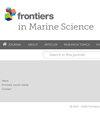过度旅游与绿色投资:中国沿海污染与碳排放的空间MMQR洞察
IF 3
2区 生物学
Q1 MARINE & FRESHWATER BIOLOGY
引用次数: 0
摘要
控制过度旅游已成为一个紧迫的问题,近年来引起了人们的广泛关注。通过分析海洋绿色能源投资(MGEI)、金融科技(FT)和旅游集中度(TC)对旅游目的地碳足迹(CF)和沿海水污染(CWP)的影响来调查这一问题至关重要。方法采用空间矩分位数回归(SMMQR)模型,通过Moran's I分析、空间关联局部指标(LISA)聚类图和稳健性检验验证这些指标对中国沿海地区两个环境指标的影响。结果两项环境指标均表现出较强的空间正相关,且以高-高(HH)集群为主,主要集中在上海、广州和三亚等地区,表明环境压力显著。TC和FT加剧了CF(6.215 ~ 13.185和0.715 ~ 2.110)和CWP(5.210 ~ 10.145和2.045 ~ 4.570)的影响,而MGEI则表现出CF(-3.078 ~ 4.042)和CWP(-3.038 ~ 6.858)的混合影响,其空间依赖关系在0.275 ~ 0.312之间。这些发现支持了最近关于旅游业和金融环境影响的研究,通过纳入空间动态和投资来扩展分析,并精确指出高影响地区的过度旅游风险。该研究建议设定一个过度旅游的门槛,以更好地管理这一问题。本文章由计算机程序翻译,如有差异,请以英文原文为准。
Over-tourism and green investments: spatial MMQR insights on China’s coastal pollution and carbon emissions
IntroductionControlling over-tourism has emerged as a pressing concern, attracting significant recent attention. Investigating this issue through the analysis of the impacts of marine green energy investment (MGEI), fintech (FT), and tourism concentration (TC) on carbon footprint (CF) and coastal water pollution (CWP) at tourist destinations is crucial.MethodsThis study employs the Spatial Method of Moment Quantile Regression (SMMQR) model to examine the effects of these indicators on two environmental metrics in coastal regions of China, validated through Moran's I analysis, Local Indicators of Spatial Association (LISA) Cluster Maps, and robustness checks.ResultsResults reveal strong positive spatial autocorrelation, with dominant High-High (HH) clusters for both environmental indicators, concentrated in areas such as Shanghai, Guangzhou, and Sanya, indicating significant environmental pressures. TC and FT exacerbate CF (6.215-13.185 and 0.715-2.110) and CWP (5.210-10.145 and 2.045-4.570), whereas MGEI exhibits mixed CF (-3.078-4.042) and CWP impacts (-3.038-6.858), driven by spatial dependencies ranging from 0.275-0.312.DiscussionThese findings bolster recent research on tourism and FT's environmental impacts, expanding the analysis by incorporating spatial dynamics and investment, and pinpointing over-tourism risks in high-impact areas. The study proposes setting an over-tourism threshold to better manage this issue moving forward.
求助全文
通过发布文献求助,成功后即可免费获取论文全文。
去求助
来源期刊

Frontiers in Marine Science
Agricultural and Biological Sciences-Aquatic Science
CiteScore
5.10
自引率
16.20%
发文量
2443
审稿时长
14 weeks
期刊介绍:
Frontiers in Marine Science publishes rigorously peer-reviewed research that advances our understanding of all aspects of the environment, biology, ecosystem functioning and human interactions with the oceans. Field Chief Editor Carlos M. Duarte at King Abdullah University of Science and Technology Thuwal is supported by an outstanding Editorial Board of international researchers. This multidisciplinary open-access journal is at the forefront of disseminating and communicating scientific knowledge and impactful discoveries to researchers, academics, policy makers and the public worldwide.
With the human population predicted to reach 9 billion people by 2050, it is clear that traditional land resources will not suffice to meet the demand for food or energy, required to support high-quality livelihoods. As a result, the oceans are emerging as a source of untapped assets, with new innovative industries, such as aquaculture, marine biotechnology, marine energy and deep-sea mining growing rapidly under a new era characterized by rapid growth of a blue, ocean-based economy. The sustainability of the blue economy is closely dependent on our knowledge about how to mitigate the impacts of the multiple pressures on the ocean ecosystem associated with the increased scale and diversification of industry operations in the ocean and global human pressures on the environment. Therefore, Frontiers in Marine Science particularly welcomes the communication of research outcomes addressing ocean-based solutions for the emerging challenges, including improved forecasting and observational capacities, understanding biodiversity and ecosystem problems, locally and globally, effective management strategies to maintain ocean health, and an improved capacity to sustainably derive resources from the oceans.
 求助内容:
求助内容: 应助结果提醒方式:
应助结果提醒方式:


